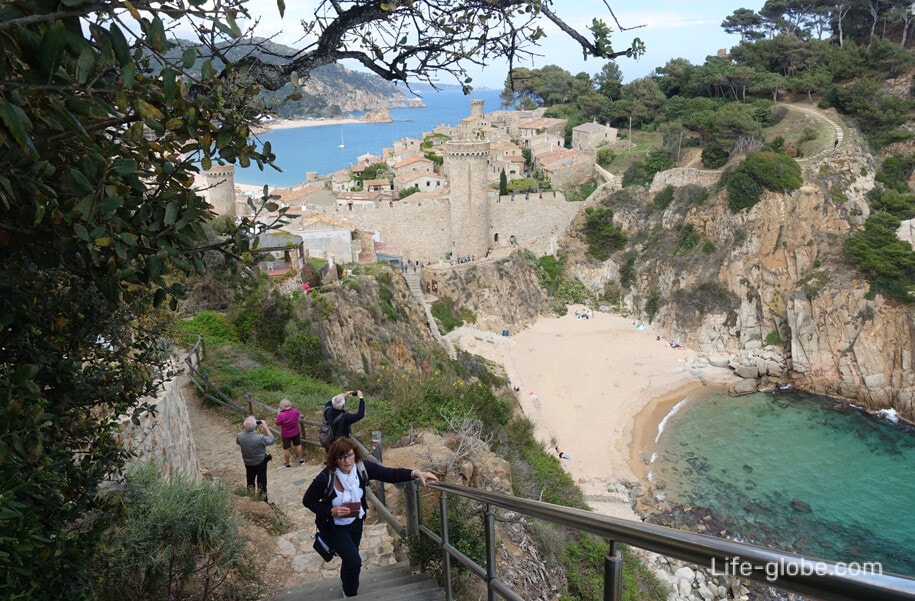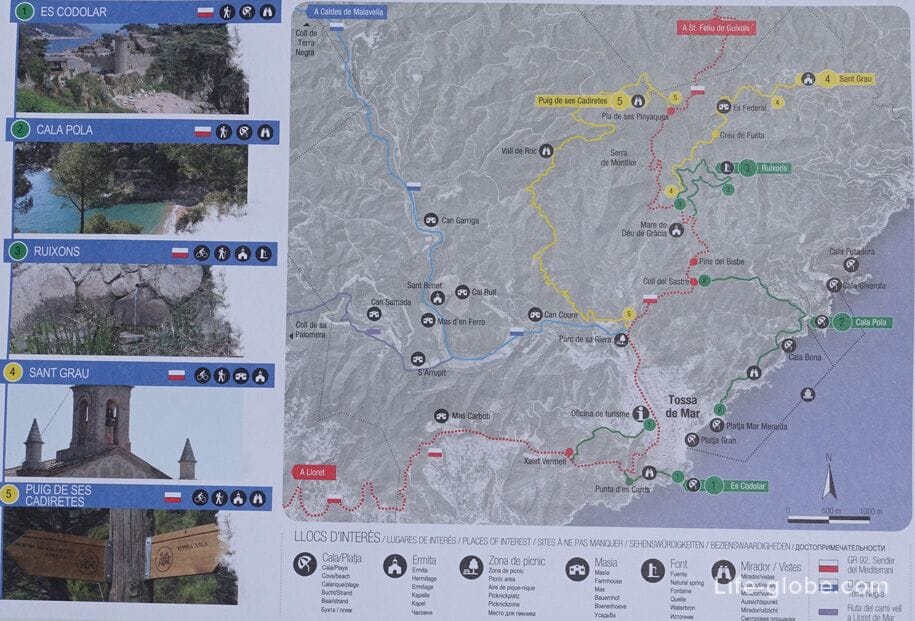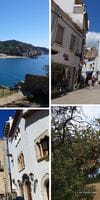Tossa de Mar is a small town located on the Spanish Costa Brava is famous as the beaches and their attractions.
Attractions of Tossa de Mar. What to see, where to go in Tossa de Mar
Fortress of Tossa de Mar
The fortress or castle of Tossa de Mar is a complex of medieval buildings enclosed by a defensive wall with watchtowers.
The castle of Tossa de Mar is also known as Vila Velha (Vila Vella), which means "Old town".
The history of the castle Dating back to 12-14 centuries. It was built as protection from enemies.
On the territory of the old town are some of the important sights of Tossa de Mar, such as defensive walls and towers; a Gothic cross carved from stone, the lighthouse of Tossa de Mar; the remains of the old Church of Sant Andreu; the house of Sant drape and the home of the Batlle de SAC, where now is the Municipal Museum of the city. Read more about the castle of Tossa de Mar...

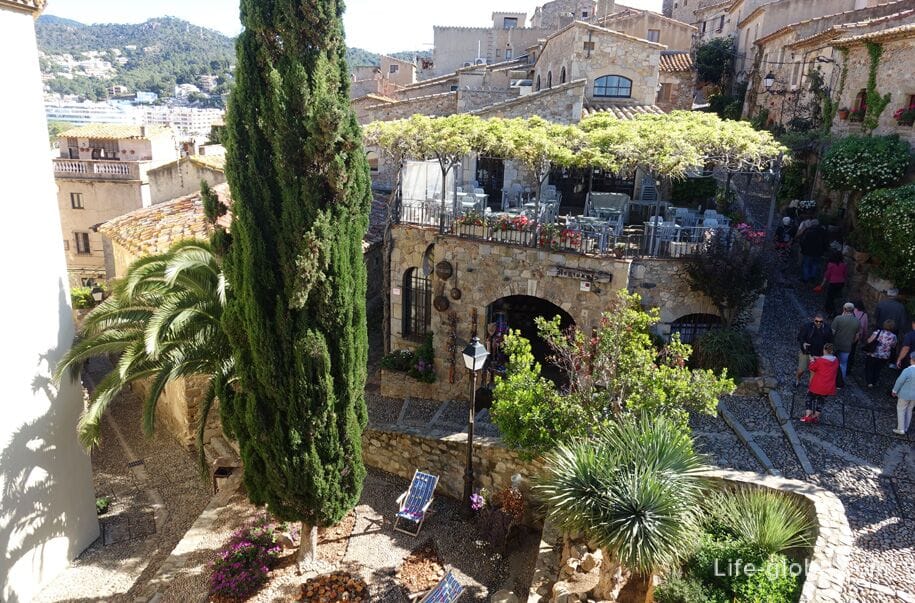
Promenade Tosa de Mar
The promenade of Tossa de Mar promenade, which is one of the main places for walking and recreation in the city.
Along the waterfront there are cafes and restaurants, souvenir shops and places to rest, viewpoints, monuments and sculptures, among which are remarkable:
- a bronze statue dedicated to the Roman goddess of war and wisdom, Minerva (Estatua de Minerva), located on one of the viewing platforms;
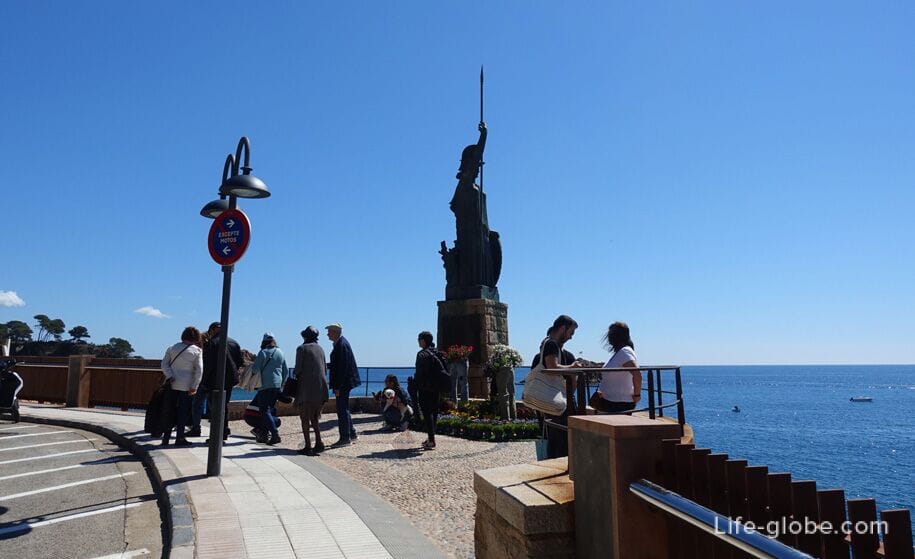
- MW-bunker (Búnquer) - a house known as the Hopper, since it has the unusual buildings of the Spanish coast appearance;

- sculpture "the Seagull". Read more about promenade in Tossa de Mar...
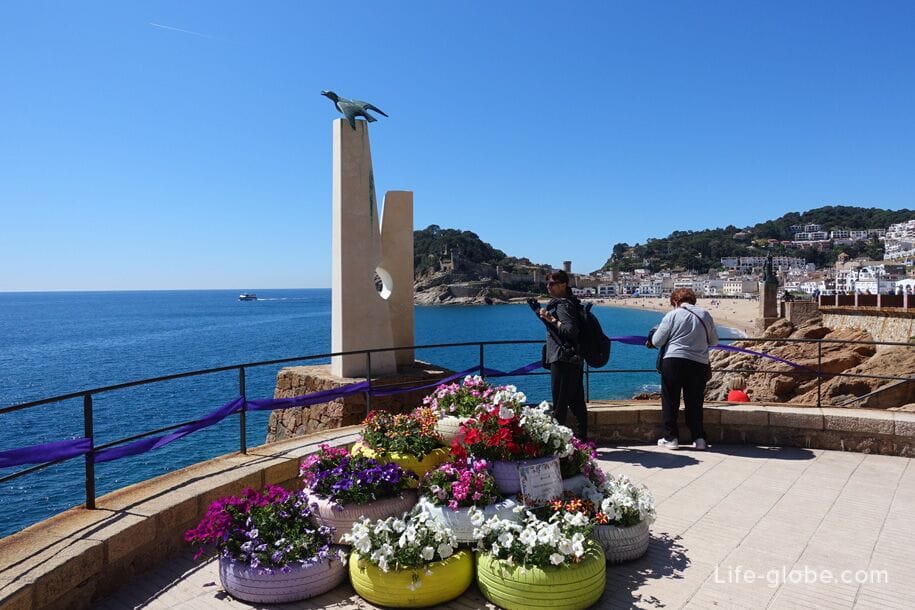
Plaza de españa (house of sans and house Ferrer)
House Sens (Casa Sans More), one façade overlooking the embankment and the other on the square of Spain (Plaça Espanya).
The house was commissioned by Joan sans in 1906.
The uniqueness of the building aesthetic is eclectic. The architecture is a perfect combination of modernist elements with the influence of colonial architecture. During the history of the building facades were changed, although some original features still remained.
The house is decorated with modernist gargoyles, depicting the seasons, decorated with multicolor broken ceramics "trenkadis" and forged elements. In the interior of the house has been preserved: stained glass with floral motifs and fireplace the modern era, as well as a marble staircase and a fountain with a statue of Diana the huntress belonging to the first half of 1900-ies.
Now the walls of the house is a 4-star hotel Diana features a terrace with sea views.
House Sansa, the view of the waterfront
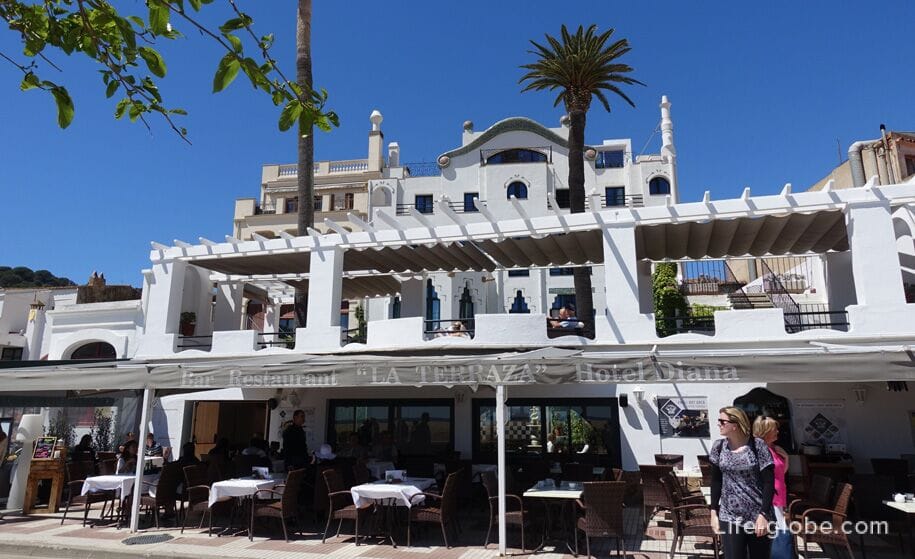
To the house of sans adjoins the house brother Ferrer (Ferrer Ca les Germanes), built in 1905 and eye-catching these elements, the upstairs gallery; patterns located on the building facade (above the Windows and under the eaves), as well as sculptural shield in the Central part of the facade, above which you can see the date "1905".
In the photo the house sans on the left, house Ferrer on the right (view from the Plaza of Spain)

Espana
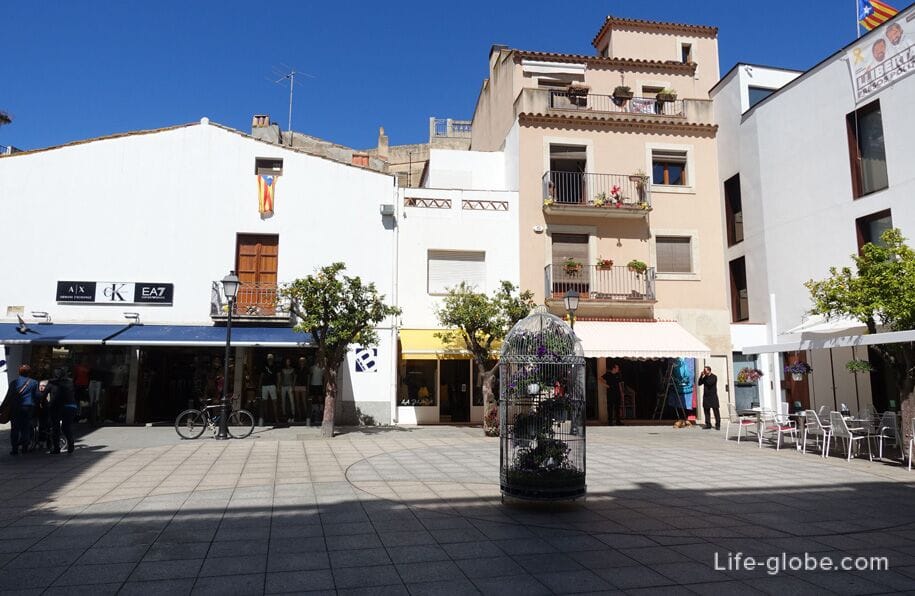
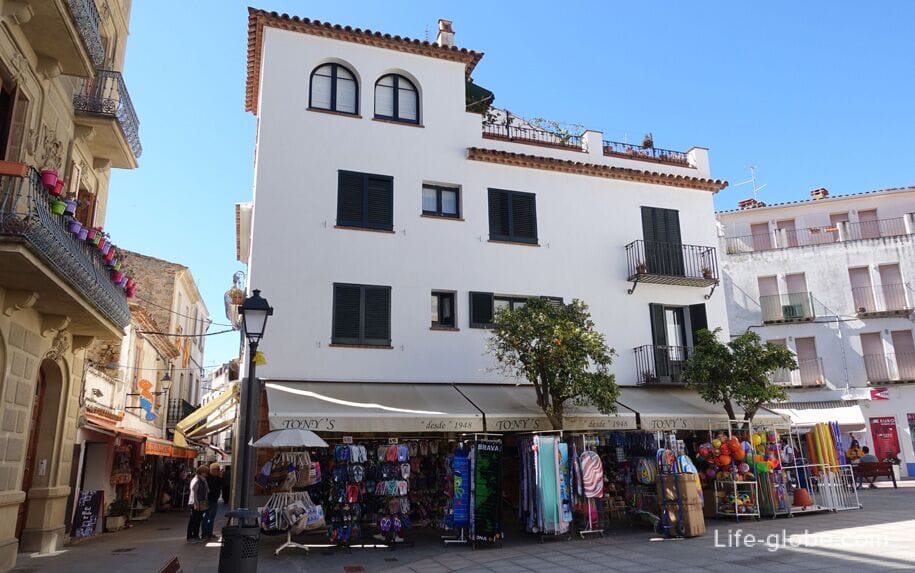
The Church Of Sant Vicenç
Parish Church of San Vicente, or Saint Vincent de Paul (Iglesia parroquial de San Vicente / Església parroquial de Sant Vicenç) is the main and largest Church in Tossa de Mar.
The Shrine was built in 1775 in a neo-classical style and opened in 1776, after 20 years of construction.
The Church dedicated to the Martyr Vincent Zaragoza.
The rather simple appearance of the Church features a spacious main nave and side chapels. Read more about Church of Sant Vicente...
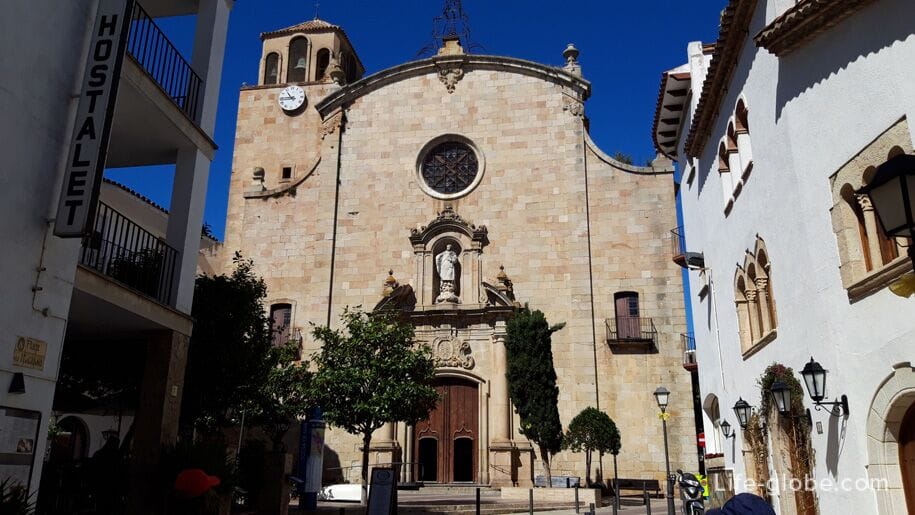

The chapel of the Theotokos Savior of the drowning
Chapel of the virgin of Socorro (Capilla de la Virgen del Socorro) is a small white chapel, located in the heart of Tossa de Mar.
The chapel was built in the 16th century and say its founder was a sailor Antoni Caixa, who erected the Shrine in thanksgiving to the Virgen del Socorro for saving him from a shipwreck.
The chapel that you see today is the result of the reconstruction of the 18th century. It is a rectangular building with lowered arched portal, niche and round window at the top, which closes a simple bell tower.
The chapel is located in a place formerly called camp de La Creu (the Meadow hoar-cross), because it housed the landmark cross. The chapel is perched at the intersection of the roads - the Royal road to Girona and the local Lloret, later became an important religious center and it was visited by passing sailors and merchants.
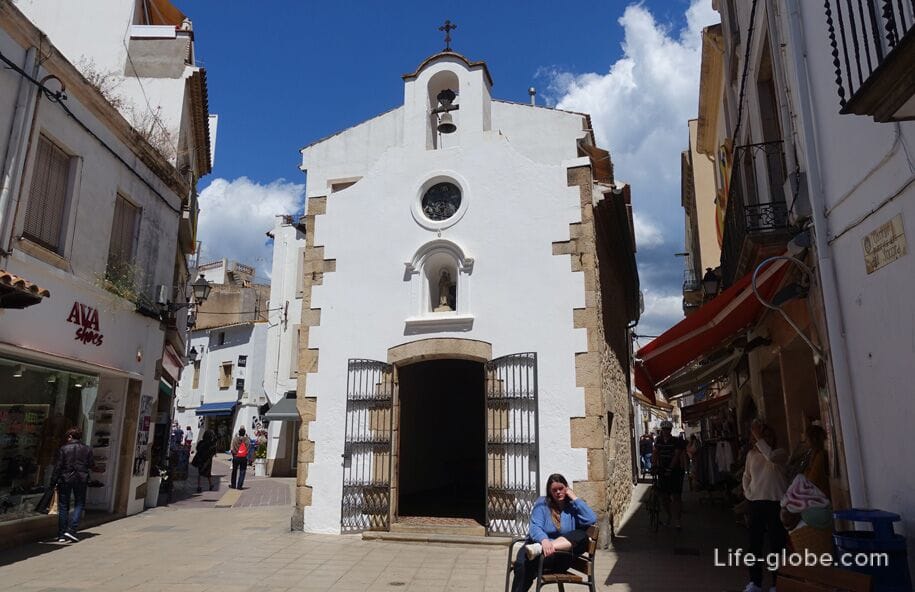
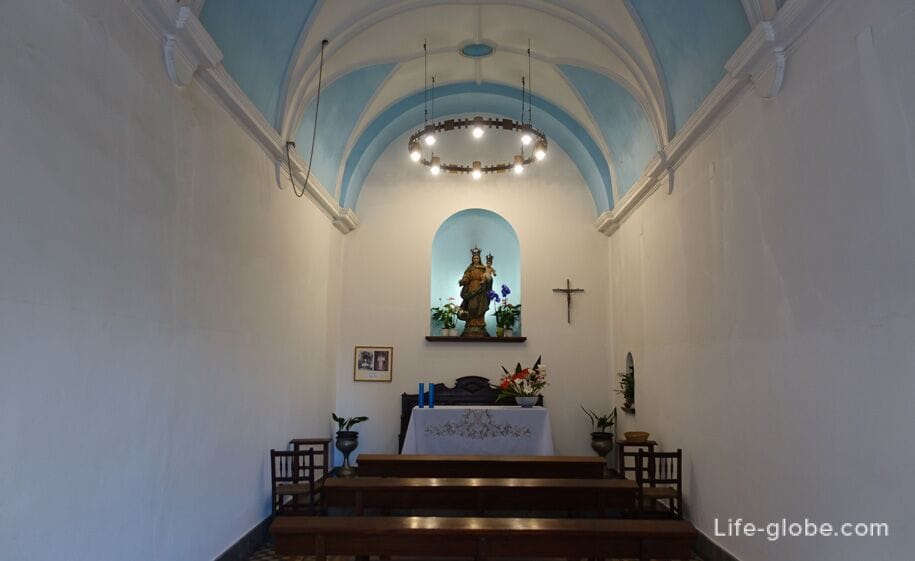
House Ganga
Home of the Ganges or the house Leandro (Can Ganga / Can Leandre) - a former 16th-century farmhouse, one of the first that was built outside the fortress walls, which still preserved some Gothic lintels, a large portal and a protective part on the top floor.
Home of the Ganges is a Prime example of the former fortified houses, because during construction it was necessary because the house stood close to the sea and could become easy prey for the enemy.
In the decoration of the Central window you can see small sculptures of angels. In the interior of the house there is an old mural found in live rock.
Two names of the house with whom he is known, comes from the two owners, a prominent family of the Ganges and Leandro Dipping of Xiberta.


The House Of Mas Rabassa
Old Mas Rabassa (Rabassa Mas Antiguo) - farm house, built outside the city, perhaps in the fourteenth century.
The current form of the house responds to the changes made in the 16th and 17th centuries.
This house is a classic example of a fortified house with a square watchtower with battlements (16th century). Also notable guard hinged balcony-tower of the 17th century, located on one of the corners of the house.

Other houses in Tossa de Mar
16-18 century was the heyday of Tossa de Mar. The population steadily increased and the city expanded. In those days we built new buildings, are typical of the era architecture.
Some of the houses still preserved in those and currently are monuments of architecture. On these homes you can see: date, ornaments, panels and small sculptures as well as distinctive finishes, such as Windows with stone sills, cornices, portals, and the original doors of the 18th century.
To see the "old" house Tossa de Mar, is just to walk the streets of the city.


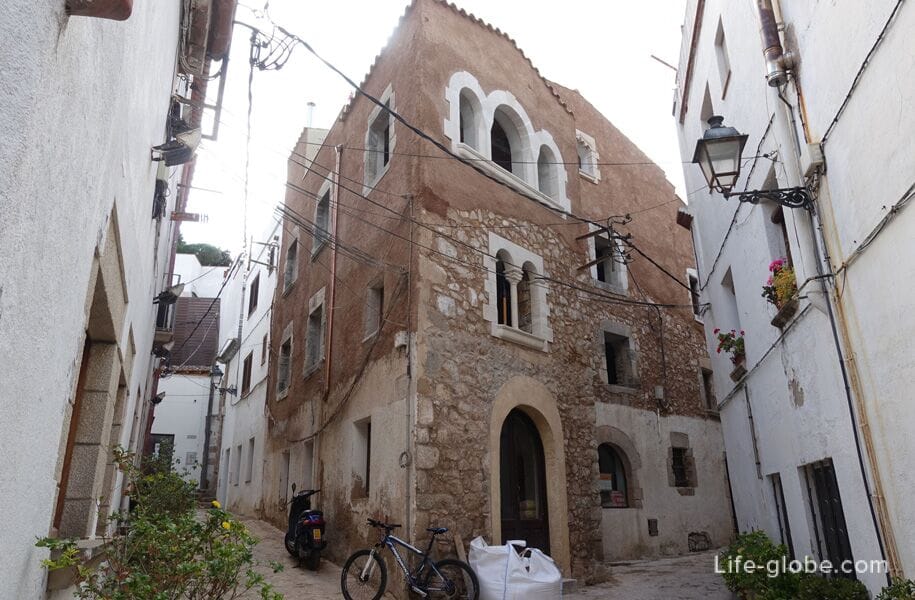
Roman Villa Castle
Villa Romana del Castle (Villa romana dels Ametllers) - the archaeological site, which is a Museum of antiquity under the open sky.
Archaeological excavations of the Villa in Tossa are of great historical importance and testify to the rich past of the region, that once on this earth has a province of Ancient Rome - Tarakan.
The Villa was founded in the 1st century BC and remained in use until 5-6 centuries of our era. This was a rural Villa for the cultivation of grapes and wine exports.
From an architectural point of view Villa is consisted of two differentiated areas:
the upper level residential "Pars Urbana" ("pars urbana"), where you can see the partially preserved mosaic floors, the remains of the rooms, a patio with a fountain and Thermae (Roman baths);
- lower agricultural "Pars of fructuaria" ("pars fructuaria"), where warehouses and processing facilities for agricultural products, which produced wine, oil, salted fish, and where also were stored the cereals. Read more about Villa Castle...
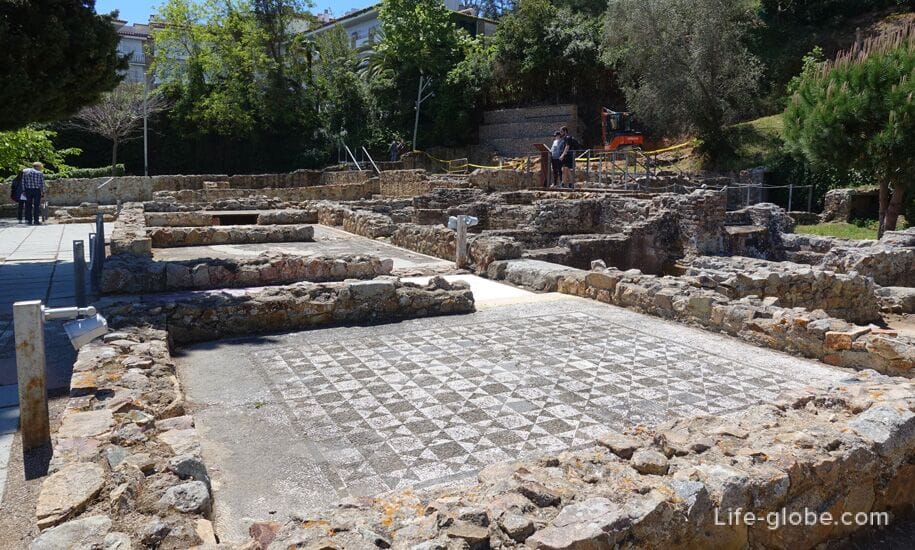
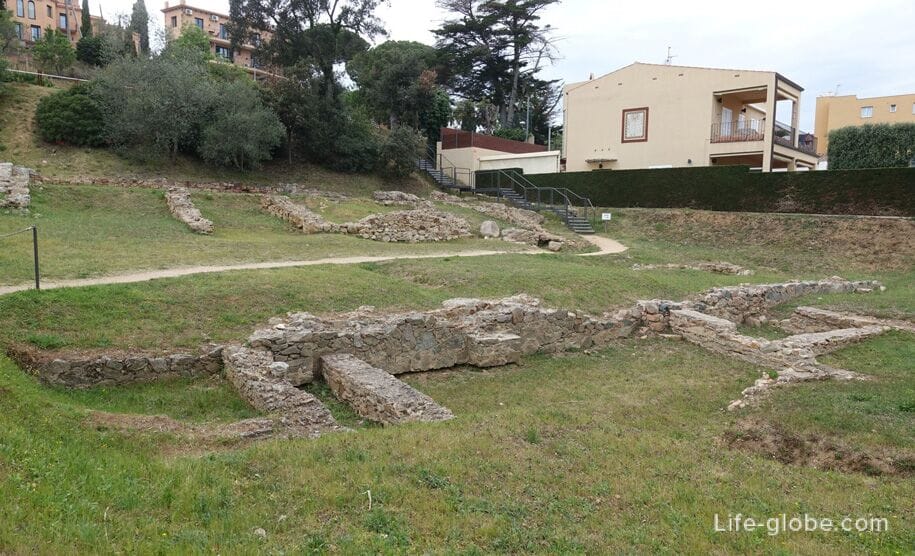
Old hospital San Miguel
Old hospital of San Miguel (antiguo Hospital de San Miguel) is located in front of the Villa Castle.
Hospital of San Miguel or St. Michael's orphanage was founded in 1773 as a hospital for the poor, thanks to the legacy of Thomas Vidal and ray, who went to America, and there is richer, has returned home and left part of his fortune to the construction of the hospital.
In 1903, the hospital was converted into a monastery of nuns and school.
Now the walls of the old hospital is a cultural center (Casa de la Cultura), with an internal courtyard and a chapel dedicated to San Miguel (Saint Miguel / Capella de Sant Miquel). Read more about the complex San Miguel...
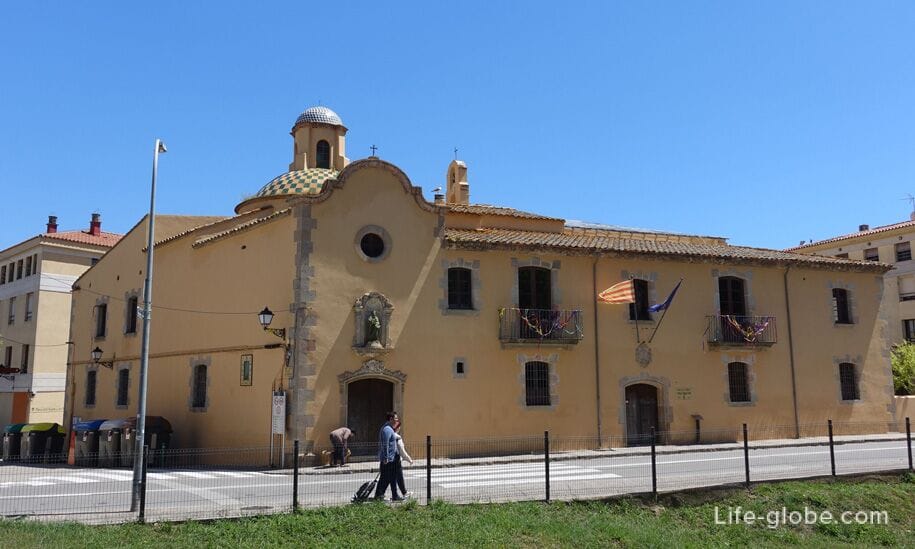
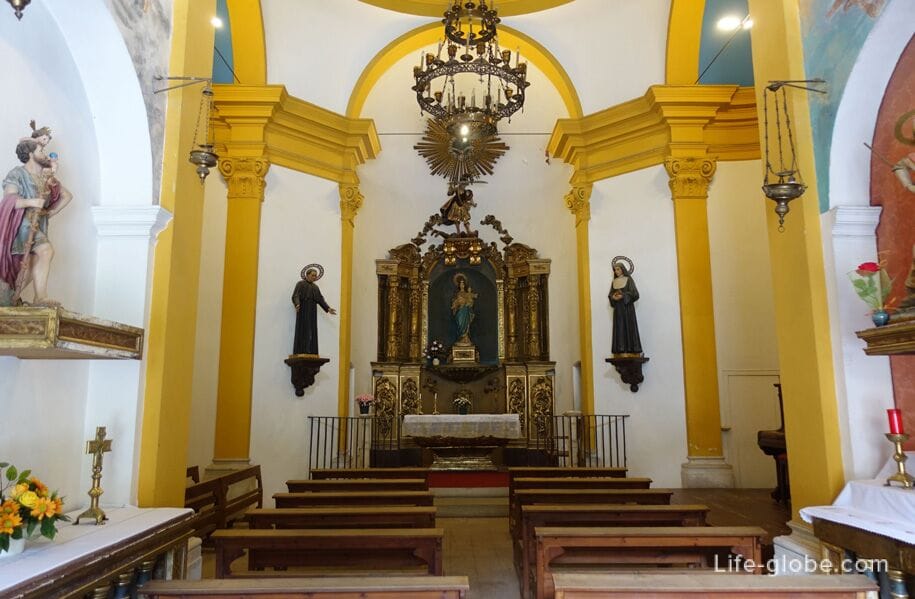
Moorish tower
Moorish tower, also known as the Moors ' clock tower, Torre del Moros or Kan-Codru (Torre dels Moros / de Can Magí) - a typical example of watchtowers, at the behest of Philip II was built in the 16th century throughout the Mediterranean coast of the Iberian Peninsula, in order to protect the population and territories from raids and pillaging pirates from North Africa.
The connection between the towers was maintained by using smoke signals by day and lights by night. In case of danger, the sentinel warned residents that the last had to take refuge within the fortified walls.
Tower those was built according to the generally accepted model of the time - two-storey with wooden flooring, embrasures and battlements. The tower was restored in 1997.
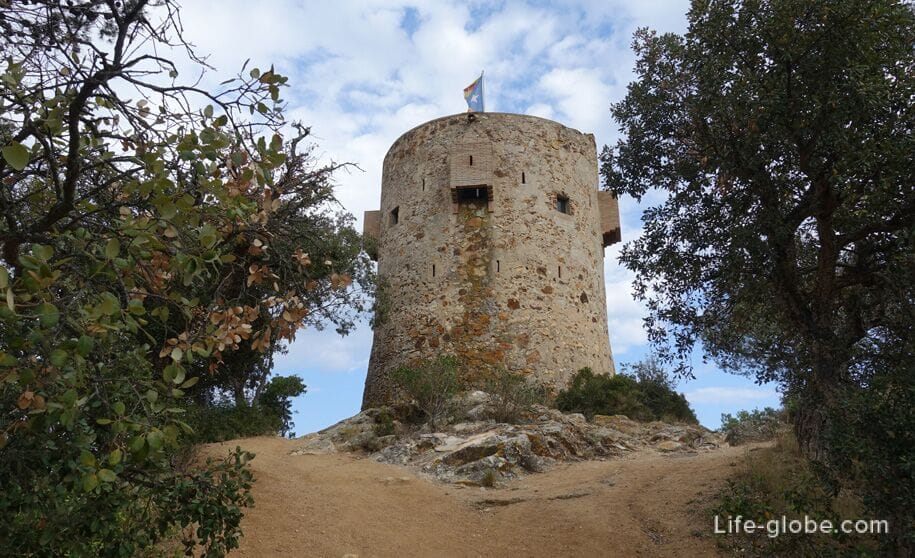
Sculptures and monuments
Remarkable tosse well as monuments and sculptures located in different parts of the city and near the coast.
For example, the monument to the wife of the fisherman (a la Dona del Pescador), located in the open area of the old town near the beach Codolar; sculpture old market, etc.
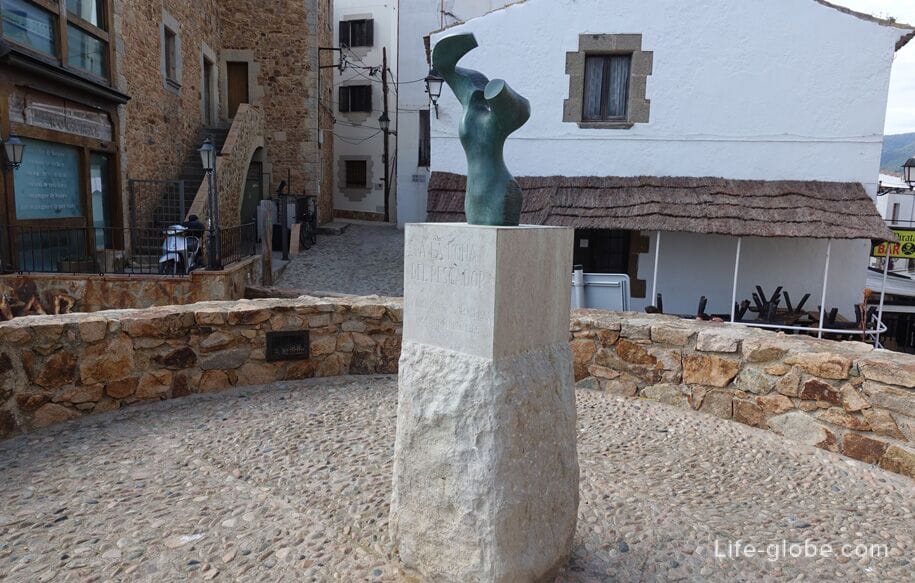
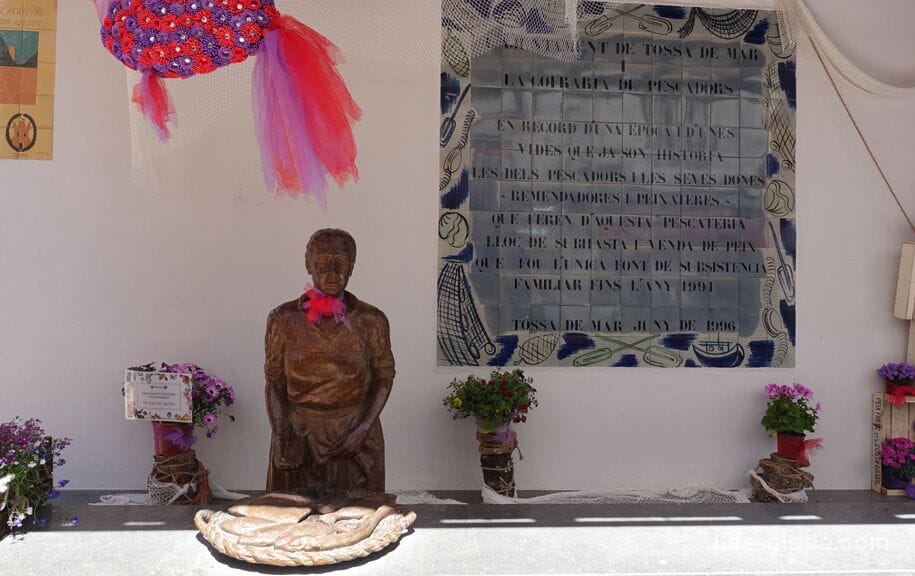
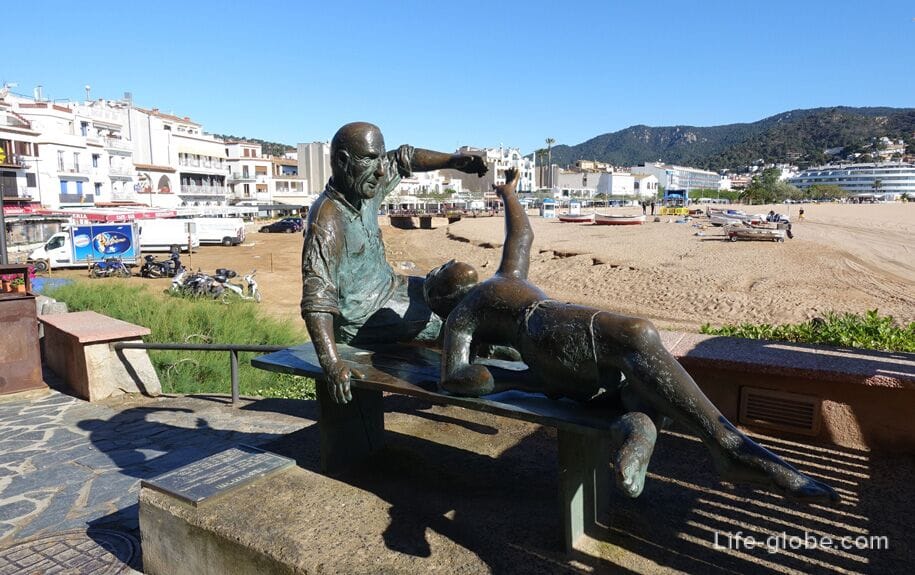
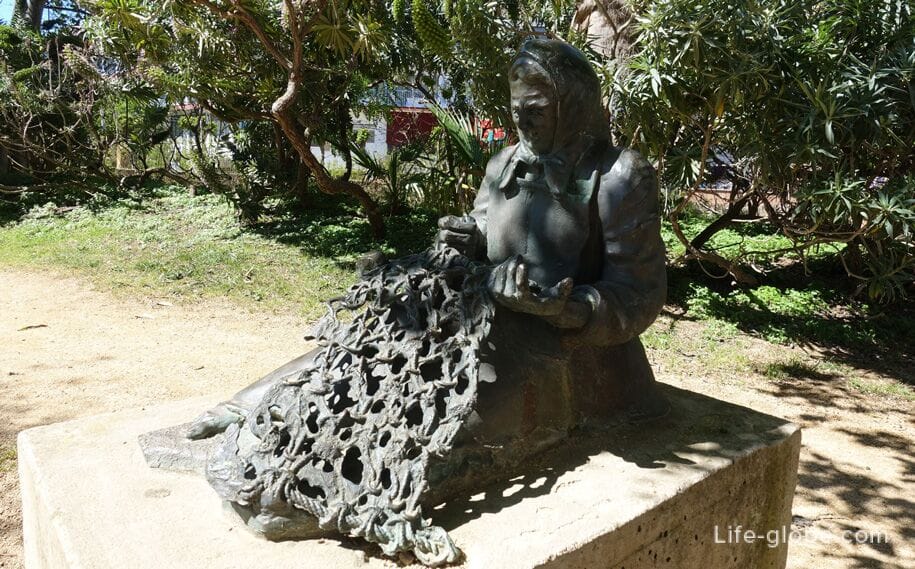
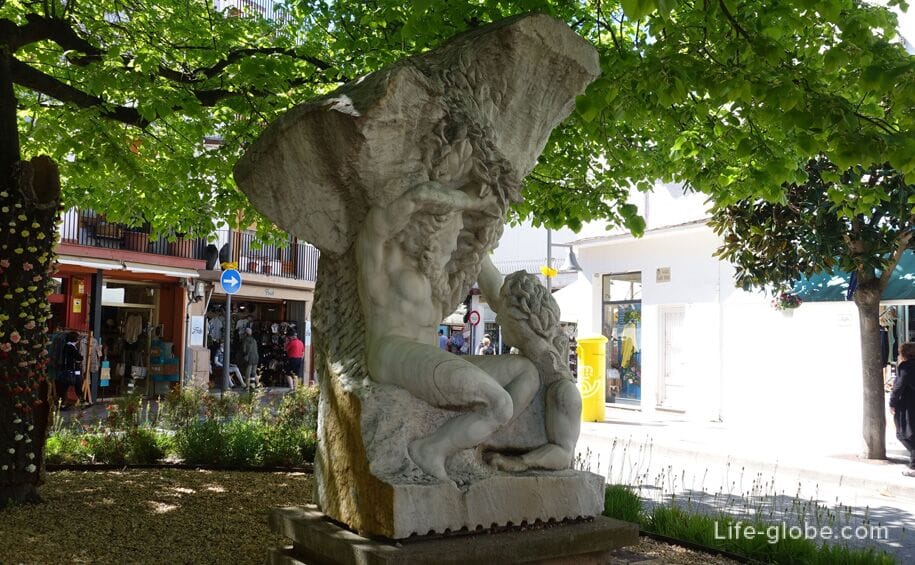
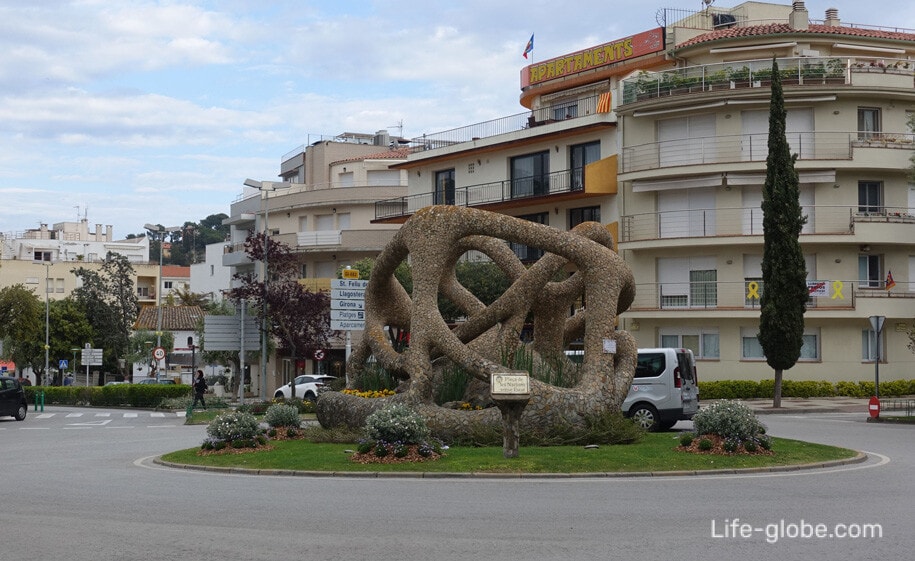
Hiking trails
Popular with holidaymakers in those Hiking trails (trail), which runs along the coast, and more remotely from those.
Walking on these trails can be a great option for pastime, and will also provide the opportunity to discover the city and the coast of Tossa de Mar.
Especially beautiful routes along the coast, taking their beginning from the Central beaches and along the Eastern and Western parts of the coasts of Tossa de Mar, as well as going outside Tossa. For example, Hiking tourist route: beach Codolar Punta des Kards...
